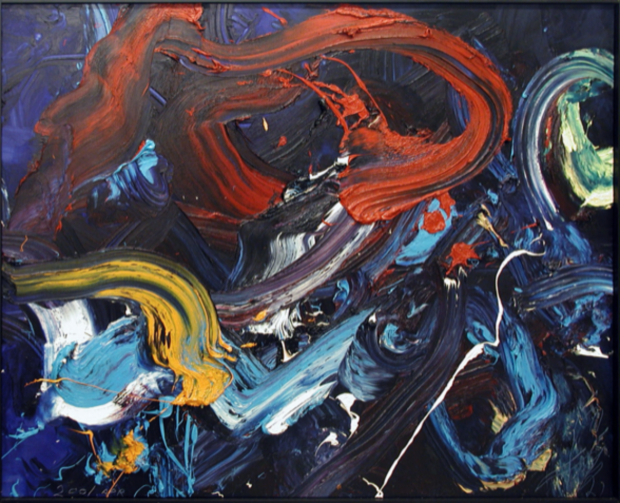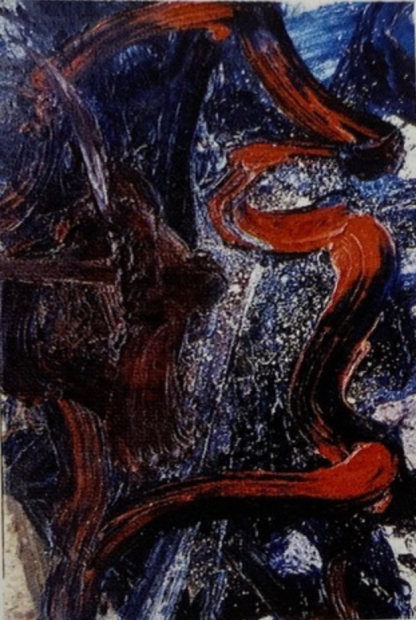
地賊星鼓上蚤 Chizokusei Kojoso 2001
序列107 Order 107 時遷 Shi Qian
太鼓の上で跳ねても音をださいような色黒の痩た小男子の泥棒。愛嬌があり見事な泥棒術で梁山泊に貢献する。
白髪さんはこそ泥がきらいで order106 の白勝とこれと2点だけ描いていなかった、描く気がせえへんのやと。
~豪傑がみなかっこええんや、特に時遷 Shi Qianだけがものすごくかっこええ、藍色の夜の空間にレンジャーみたいにロープにすがって三日月が出てますのや、粋なもんやな、これ描いたろ、、~古本屋から取り寄せた北斎の水滸伝の複製画が制作の契機でした。
これで<水滸伝シリーズ>は完結しました、実に 40 年の年月を経て。
しかもアート・遊にて、タイトルを入れられたという記念すべき作品です。
An agile, dark-black, slender man who does not make a sound when he bounces on a drum.
Shigara hated thieves and didn't draw No.106 and order 107.
I couldn't draw.
~ Hero are all cool.
In particular, this is a painting by Shi Qian, whose hangs on a rope like a ranger in a dark blue and crescent moon night space ~
He was impressed by the reproduction of the Water Margin Hero series by Hokusai, so he drew this work.
<the Water Margin Hero series> was complete. It’s took 40 years.
Moreover, it is a memorable that the title was put in at Art-U.


